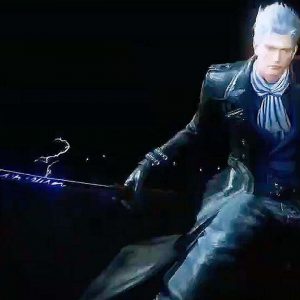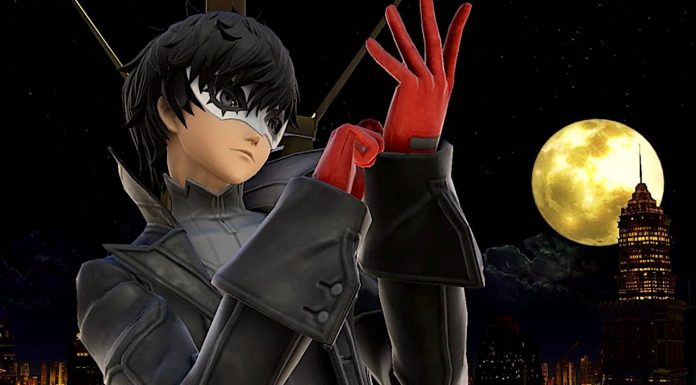[ad_1]
When many players were just beginning to explore Great Sky Island, the tutorial area in The Legend of Zelda: Tears of the Kingdom, headlines began making the rounds that a speedrunner had already completed the game hours after its release – the record was one hour and 34 minutes.
That speedrunner, Gymnast86, whose real name is Carl Wernicke, is part of a growing number of Zelda speedrunners who have already spent thousands of hours experimenting, iterating, and completing run-throughs of Tears of the Kingdom in the few short weeks since it launched. The community is largely the same group of pathfinders and mad scientists who have been setting records in Breath of the Wild for the past six years, though the excitement of this sequel has done wonders to bolster their numbers and renewed interest in their undertakings.
Gymnast’s first TotK record has long-since been toppled by ever-competitive speedrunners, but he and many others continue to discover new glitches, set new records, and improve the community’s understanding of the game for which they’ve developed a deep admiration.
Broken In A Good Way
Many TotK speedrunners found a home with the Zelda series long ago, as it hosts one of the largest speedrunning communities. Ocarina of Time, the original 3D Zelda game, drew many to speedrunning, and still has a competitive scene to this day. One such speedrunner is Venick, who at the time of this writing holds the “All Dungeons” record in Tears of the Kingdom, and says he was originally drawn to speedrunning Ocarina for a simple reason:
“Ocarina of Time is very broken,” Venick says with a laugh. “In a good way! It’s what got me into speedrunning.”
That somewhat backhanded compliment is a point of praise that’s shared by many in the Zelda speedrunning community, where the player’s ability to bend the rules makes the games ideal candidates for competitive speedruns.
“
“It’s the way all the Zelda games are built,” Venick says. “In a Mario game it’s: get from the start of the level to the star as fast as you can. That’s your goal. But Zelda requires asymmetrical thinking. Instead of following down a predetermined path, it’s ‘how can I skip half of these options and just get to the end?’ That’s what I love.”
As for Tears of the Kingdom, maybe the most significant reason it’s become a focus for the speedrunning community is the fact that the idea of doing the unexpected plays extremely well with the game’s central premise. Like Breath of the Wild before it, the sequel encourages players to get creative and discover clever solutions to problems, and that’s exactly what the speedrunning community has already been doing for decades.
“We’ve seen descriptions like ‘the game makes you feel like a genius’ or ‘it’s open solution,’ since Tears of the Kingdom doesn’t have a set solution for many of its puzzles,” says Gymnast. “When you complete a puzzle in Tears of the Kingdom you feel smart because you feel like you did some unique critical thinking or testing with the game’s mechanics in order to come to your solution.
“In a way, speedrunning and glitch hunting ha[ve] always been thinking about games like this. We treat every game as open solution with whatever mechanics or glitches we can figure out and try to piece them together to find what the most optimized solution through the whole game is. Finding a glitch that’s useful for a speedrun feels very similar to figuring out the open solution puzzles that are presented to us in Tears of the Kingdom.”
That embracing of TotK’s core concept, taken to its logical extreme, has made the Zelda speedrunning community one of the most active groups in a long time, with new records and dozens of game-altering discoveries being made every day.
Following The Glitches
Speedrunning wouldn’t be the same robust hobby that it is without the exploits and glitches that competitors make use of to pull off their rapid runs, and that’s where self-described “glitch hunters” come in – contributors who focus on finding new, useful ways to break things in hope their bugs might prove useful to a speedrunner.
Glitch hunters aren’t concerned with setting records. Instead, they get their kicks out of experimentation and finding new and creative ways to make the unexpected happen, then document their results in painstaking detail to be recreated and expanded upon by the larger speedrunning community.
“For smaller games, the roles for glitch hunters and runners overlap, but with a game this massive it really is a community effort with many people with different interests that brings the run to life,” explains Sr Tapir, an administrator for the TotK speedrunning Discord server.
In other words, the TotK speedrunning community splits the work and collaborates as they ideate, experiment, and apply the bugs they find in Hyrule’s latest open world.
Mozz, a glitch hunter who’s credited with discovering numerous TotK exploits, explains, “Glitches lead to more glitches, which is why any discovery within the glitch community or speedrunning server is a pretty big deal. Every little thing we find expands on what we know about the game, and that knowledge opens up new paths for other glitches.”
With excitement growing in his voice, he details how a seemingly benign animation cancelling exploit led to the discovery of a glitch called Fuse Entanglement, which allows Link to fuse an item to his shield without moving the object from its original position. That ability paved the way for yet another glitch called Springboarding, wherein Link can bounce along on a shield-mounted spring infinitely, moving the player far distances extremely quickly.
And the glitches haven’t stopped there. “By using Springboarding, we discovered the Entanglement Height Glitch,” Mozz explains. “For some reason, once you’ve left the 60-meter radius at which the spring fused to your shield loads out of the world, the game gets a little confused and so when you start Shield Surfing it thinks the spring is underneath you when it isn’t, suspending Link in the air.”
“Springboarding and the Entanglement Height Glitch then led to yet another glitch called Springboard Clipping, which allows Link to clip through the floor while Springboarding under a low ceiling. So you can find anywhere in the game, Springboard under it, and Link enters this weird state where he’ll start ascending with no collision, then drop him through the floor so you can get under the map,” says Mozz.
The list goes on and on, with new exploits, bugs, and downright weird stuff discovered every day by a community that’s determined to push the boundaries well beyond what the developers thought possible. The current holy grail? Discovering a suitable replacement to the Whistle Sprinting glitch, which allows Link to sprint infinitely without depleting his stamina meter. While this glitch was a key component of Breath of the Wild speedrunning, it isn’t present in Tears of the Kingdom. The community already has a few potential successors in the works, though none have emerged as the clear best option for speedrunning – at least at the time of this writing.
As for why TotK’s glitch hunters go through all the trouble to do what they do, the answer is simple: “It’s just interesting,” laughs Tauktes, a recent glitch hunting neophyte. “It’s fun to find glitches!”
Battle Of The Versions
But as the community finds and exploits a growing number of glitches, Nintendo pushes back by patching out the game’s biggest issues. This means that the speedrunning landscape changes on a regular basis as old bugs are fixed and new ones discovered, which creates a debate over which versions of TotK should be the focus of future speedrunning efforts and how leaderboards should be organized to reflect accomplishments within different versions of the game.
The debate is centered around two of the biggest glitches that shipped with the day-one version of Tears of the Kingdom, both of which have since been (at least partially) patched: “Zuggling” and Auto Build Cancel Slide (or ABC). These glitches were prominently featured in speedrun records set in the earliest versions of TotK, and their absence in more recent versions have changed the speedrunning landscape dramatically.
Zuggling, which duplicates an item in Link’s hand, is a reference to a similar bug in Breath of the Wild the community called “Juggling.” But since glitch hunter Zvleon discovered the obscure mechanics involved in triggering the TotK version, they christened the new version with a Z, in their honor.
“Zuggling involves causing a desync between Link’s inventory gear and the gear that’s on the overworld, which has the effect of stacking multiple active weapon models in Link’s hand which has some other useful effects,” explains Gymnast. “If we do this, say, 10 times, then every time we attack with a weapon, it’ll deal 10x the amount of damage, which absolutely demolishes almost every enemy in the game.”
“If you zuggle enough times repeatedly, the game will begin to behave strangely and lag more due to less available memory to use which we call “zuggle overloading”. One of the strange behaviors is that if you try to hop onto a steering stick in this state, the game gets rid of all collision checks for Link and he just falls through the world without hitting anything (until we press the B button to cancel being in the steering state). Since the final boss is really low down in the depths, this is useful for skipping the path we’d normally have to take down to the depths and also skip past all the enemies and other obstacles that may be in our path. This also has some other funny effects such as Link losing his legs or hair from the memory overloading.”
As you might imagine, this exploit comes in handy during Any% runs where the goal is to beat the final boss as soon as possible, under any conditions.
The second major glitch, Auto Build Cancel Slide, has a similar goal of expedited travel, but is more useful in speedruns where the goal is to complete more of the game’s main quests.
As Gymnast explains: “Autobuild cancelling entails making a contraption that can be selected from the player’s autobuild history, selecting the blueprint from the autobuild menu, pressing B and then Y to cancel the build, and then choosing the same blueprint again. If done correctly the blueprint will be in the air while you have control of Link, but the game will continuously try to move the blueprint structure away from Link at a certain offset. If you can get onto/inside the structure (for instance by using ascend) then the structure will be both pushing Link but also trying to continuously get away from him and this results in accelerating up to really high speeds that can allow you to cross the entire overworld map in under a minute. And considering how big the game world is, that saves massive amounts of time in categories that need to do a lot of traveling like All Dungeons and All Main Quests.”
But with these massive exploits now mostly fixed, the speedrunning community has had a difficult time deciding how to proceed. Mozz, a glitch hunter who doesn’t flinch at Nintendo’s attempts to rollout fixes, finds themself on the progressive side of the debate regarding TotK versions – those who would prefer to see the community collectively leave the old versions of the game behind.
“There’s been a lot of division in the community at the moment over versions. Nintendo has been patching glitches and some people want to run the current version of the game, and others don’t.” Mozz explains. “I prefer to be on the current patch, so I’m finding glitches on the current version of the game. I kind of like the idea of staying ahead of Nintendo.”
In the end, the community took it to a vote, deciding to split the leaderboards in two: one for the original version of Tears of the Kingdom, and one for the most current version.
A Growing Community
The Tears of the Kingdom speedrunning community is an extremely passionate, creative, and dedicated group of people who seem determined to exemplify the freedom and experimentation that recent Zelda games already lean into, and based on the growing number of players who have joined in on the fun, it shows no signs of slowing down.
Tauktes, a 15-year-old German high schooler, says he began glitch hunting only a few weeks ago, but it’s quickly become an obsession.
“Glitch hunting was something I did on my own in Breath of the Wild, but I never reported anything. Now I’m documenting a lot of stuff. I did, probably, over 60 or 70 percent of the spreadsheet!”
KatyMay, a Zelda speedrunner veteran of 10+ years, says she stumbled across Zelda speedruns on Twitch, decided to give it a shot, and never turned back.
Others have become lifelong friends, like Gymnast and Venick, who are now roommates – a friendship born from a mutual love of speedrunning Zelda. They spoke to IGN while attending the Games Done Quick speedrunners convention, which they went to together. Numerous Zelda games are making an appearance at the show, including Breath of the Wild, Majora’s Mask, and Twilight Princess.
After a day on the conference floor, Gymnast sums up the feelings of many speedrunners and glitch hunters well.
“Speedrunning has allowed me to continuously enjoy each of these games for thousands of hours, and it’s still going. The replayability is practically infinite since the games will change over time depending on what glitches and techniques people find causing the speedrun times to get lower and lower, and I don’t see it stopping anytime soon.”
[ad_2]
Source link
























